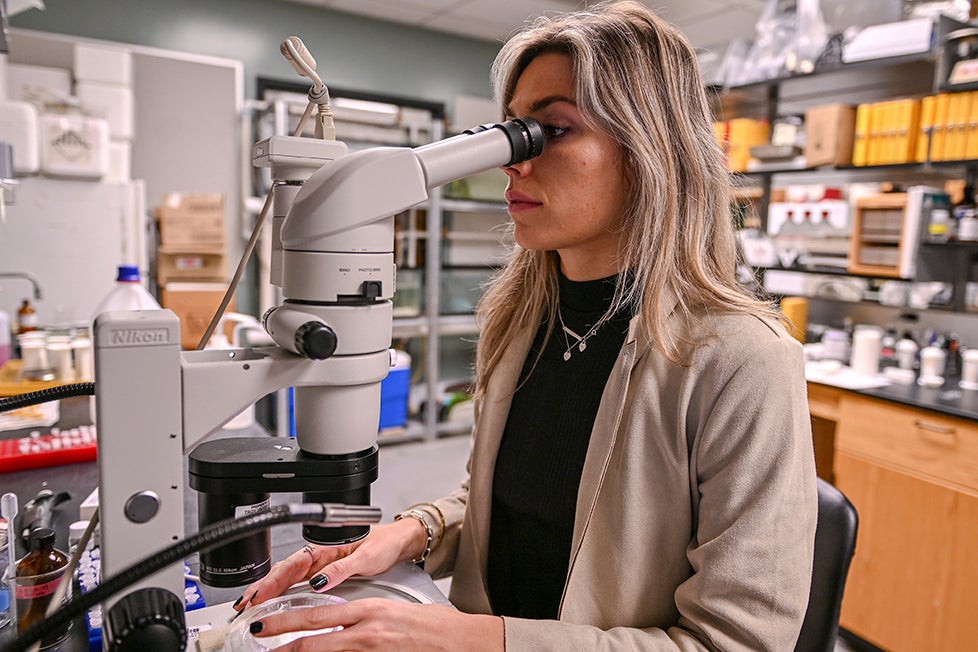Troy University graduate student discovers new species of mud dragon
Published 1:49 pm Tuesday, February 7, 2023

- Troy graduate student Madison Kennedy recently discovered a new species of mud dragon. (Submitted photo)
|
Getting your Trinity Audio player ready...
|
By Savanah Weed
While conducting research for her master’s thesis, Troy University graduate student Madison Kennedy found a new kind of mud dragon and named it in memory of her late brother.
A mud dragon is a microscopic creature in the phylum Kinorhyncha that lives on the bottom of the ocean. She saw that a few of the mud dragons she studied looked different from others she had observed.
They resembled a photo that her marine biology professor, Dr. Stephen Landers, had on the lab wall. It was a new species that had been spotted earlier, but there were not enough animals collected to formally describe it. Her new specimens made that description and publication possible.
“They are very distinct under the stereomicroscope so, when you are looking for them, they have a retraction of segments 10 and 11 into segment nine,” Kennedy said. “They also have no spines on the back.”
Mud dragons move by extending and retracting the segments that make up its body, such as its head, neck and trunk. These animals are recognizable due to the spines that cover their bodies.
Echinoderes zacharyi, Kennedy’s new species, is different from other mud dragons because its body has a smooth appearance. The word Echinoderes is the genus that this mud dragon belongs to and zacharyi is derived from Kennedy’s late brother, Zachary.
“He had the most infectious and charismatic personality,” Kennedy said. “He was basically my twin even though he was two years younger than me, so, growing up, he was always my missing link.”
Zachary had passed away from Ewing sarcoma, a rare form of bone cancer, when Kennedy started her first semester of graduate school.
“I want to carry on his legacy, and I want to bring him in because he is missing,” Kennedy said. “I want to continue talking about him, so what better way to keep his memory alive than naming something that will go far beyond our lives.”
Landers, the third author of Kennedy’s taxonomy paper for Echinoderes zacharyi, explained that he found four of these creatures before Kennedy began her thesis. However, he lacked the evidence to prove that it was a new species.
“You have to have good specimens,” Landers said. “One of mine was broken in half so I couldn’t get measurements of it, but I knew it was there.”
“This one is so unique in its anatomy that we only needed eight to get this published. There are others that are very, very similar to each other so you would need about 30 specimens.”
The study of mud dragons is relatively new. Due to the few researchers who study mud dragons, there is more about them to be discovered.
“Because of the studies out of this lab since 2013, we are getting a better understanding of their ecological role in the ocean,” Kennedy said.
She also explained that the ocean is an untapped source of discoveries.
“When you think about it, we think we know a lot, but we have yet to scratch the surface on a lot of these smaller phyla especially,” Kennedy said.




